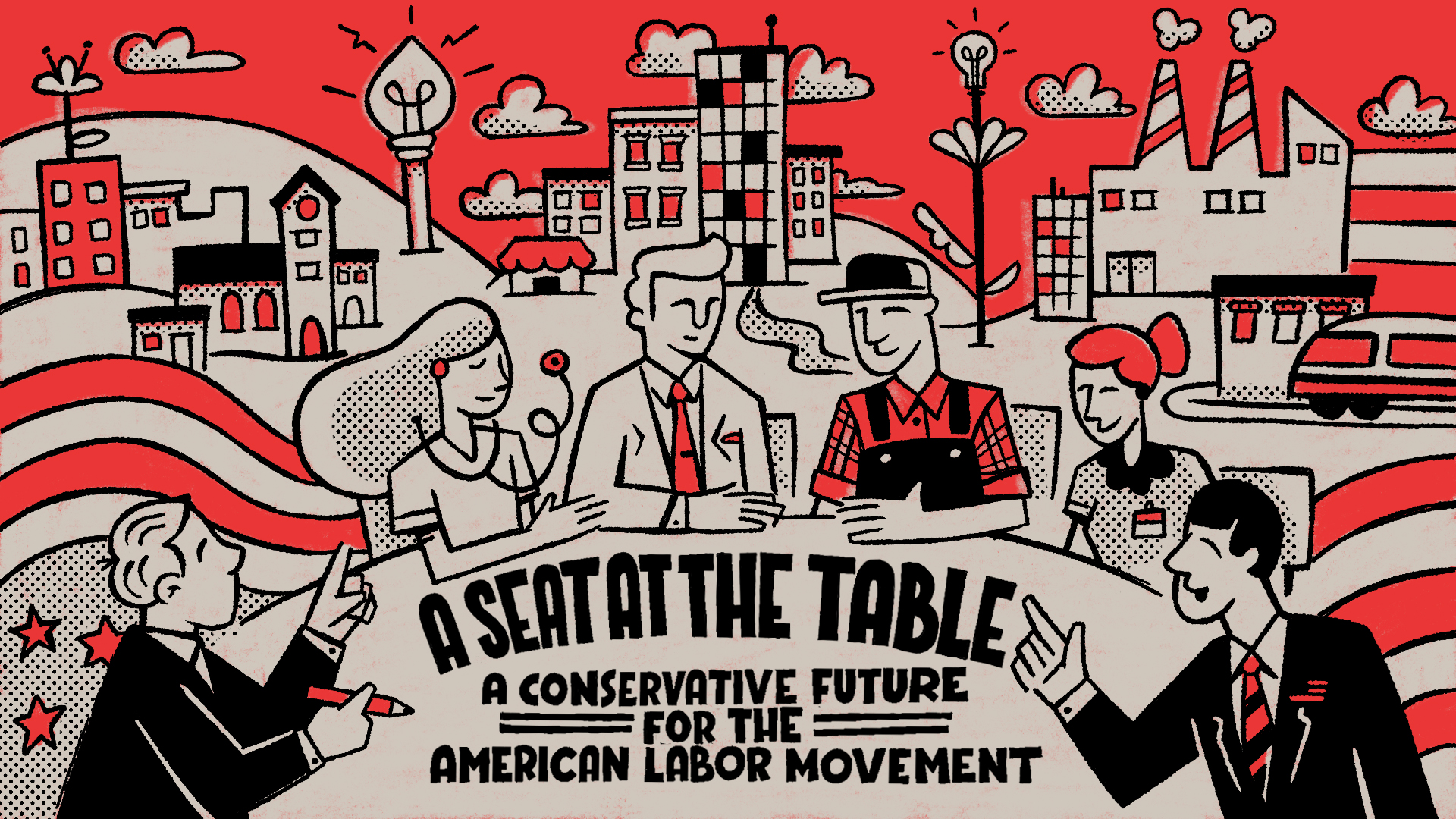

RECOMMENDED READING
The premise of this feature is that both conservatives and progressives should support workers having a “seat at the table.” We agree with that premise. But it is crucial that we ask, what is the point of ensuring workers a seat at the table? It can’t merely be the symbolism of being included. It must be that the “seat” comes with actual power to influence outcomes. We see this commitment to actual power reflected in American Compass’s recent statement, “Conservatives Should Ensure Workers a Seat at the Table,” in which the authors describe their goal as ensuring that “participants meet as equals able to advance their interests through mutually beneficial relationships.” Enabling workers to meet management as “equals” requires that workers have the capacity to build and exercise more power than they possess as individuals. That is the point of organizing. That is the point of labor law.
Eli Lehrer recommends that we “unleash[]” unions and workers from the strictures of sections 8(a)(2) and 302 as a means to “offer labor organizations a new business model while giving workers new choices.” Free of the legal strictures of 8(a)(2) and 302, workers could join works councils, workplace safety committees, quality circles, and even company unions. Unions could become benefits consultants and generate revenue by serving in that capacity. According to Eli, “People on the right should like this proposal because it allows greater entrepreneurial creativity and offers hope for new civil society forms; those on the left should support it because it offers hope for organized labor through a new business model, as well as a path toward more democratic workplaces.”
We agree that our current labor law fails by, as we put it in the Clean Slate report, “limit[ing] workers to a stark, binary choice about collective representation: They can choose to be represented by an exclusive collective bargaining union, or they can have nothing.” Given the inadequacy of choice in current labor law, we recommend providing workers with “a menu of representational choices—workplace monitors, works councils, members-only unions, and exclusive representative collective bargaining unions— . . . and making it far easier for them to embrace all of these choices.” This recommendation would certainly require changes to section 8(a)(2) and possibly to 302 as well.
So, at this level of generality, we agree with Eli: workers should have more options for collective organization and representation. But there is something fundamental missing from his proposal: namely, a consideration of whether the new forms of organization he proposes will enable workers to build and exercise power. More worrying, Eli doesn’t consider the very real possibility – borne out in both historical practice and theory – that the organizations he proposes will detract from worker power by undermining organizations that enable workers to build it.
Congress enacted 8(a)(2) in the first place in order to prevent employers from creating organizations that stymied, rather than contributed to, worker power. These organizations – called “company unions” at the time – had the shape and feel of legitimate worker organizations, but for a complex of reasons (which Mark Barenberg has explained well as a matter of both history and theory), often functioned to heighten managerial control over the workforce rather than to displace it. So, the central burden of any call to repeal 8(a)(2) is to explain how the organizations that repeal unleashes will contribute to, and not interfere with, the central project of power-building.
Eli’s proposal to continue 8(a)(2)’s prohibition on employer dominance in some circumstances serves only to prevent the worst abuses of the law but does nothing to address the power-building question. Similarly, his proposal to allow worker organizations to derive money from their relationships with employers fails to provide a path to power. While money is often equated with power, it can entrench the power disparity – not alleviate it – if that money flows in only one direction,
In our view, allowing for alternative forms of worker organization makes sense if and only if two other things can be ensured. First, these alternative forms of worker organization must be structured so that they contribute to the growth of full-fledged collective bargaining unions. This is essential because a works council consisting of, say, ten workers out of a workforce of, say, five hundred, has – as a matter of structural reality and constraint – approximately zero power. What could the ten workers do if they suggested something and management refused? Councils, however, can be structured so as to make real union organizing more feasible: for example, councils can be given the right to share information, consult, and collaborate with unions, and unions can be given rights to nominate workers for the councils. With design features like these in place, works councils can serve as legitimate sources of information exchange between labor and management while concurrently contributing to the growth of organizations through which workers can genuinely influence outcomes.
Second, organizations like safety committees and works councils must be embedded in a broader system of labor representation that extends from the shopfloor, through the economic sector, and to the corporate boardroom. Eli cites the European example in support of his works council proposal, but everywhere in Europe – and across the globe – works councils only work because they are part of an integrated system of representation. That system includes strong unions capable of engaging in meaningful collective bargaining in the workplace and sectorally. And it includes robust provision for worker representation on corporate boards. The system works because, functioning as a whole, it ensures that workers have genuine power. But without all the planks in place, works councils would have no independent power and simply could not perform the function they are meant to perform.
In sum, we join in Eli’s call for expanding the range of representational forms available to workers. But we do so only with the added insistence that these forms be designed to ensure real power – that they ensure labor and management can truly “meet as equals.”
Recommended Reading
Conservatives Should Ensure Workers a Seat at the Table
Statement on a conservative future for the American labor movement.
The Unlikeliest of Unions: Conservatives Look to Make Allies in the Labour Movement
American Compass’s work on the labor movement and a broader restoration of conservative economics receives coverage north of the border.
New Think Tank Looks to Counter Establishment’s Influence in Policy-Making Circles
American Compass’s Oren Cass joins Steve Hilton to announce a new project on a conservative future for the American labor movement.












